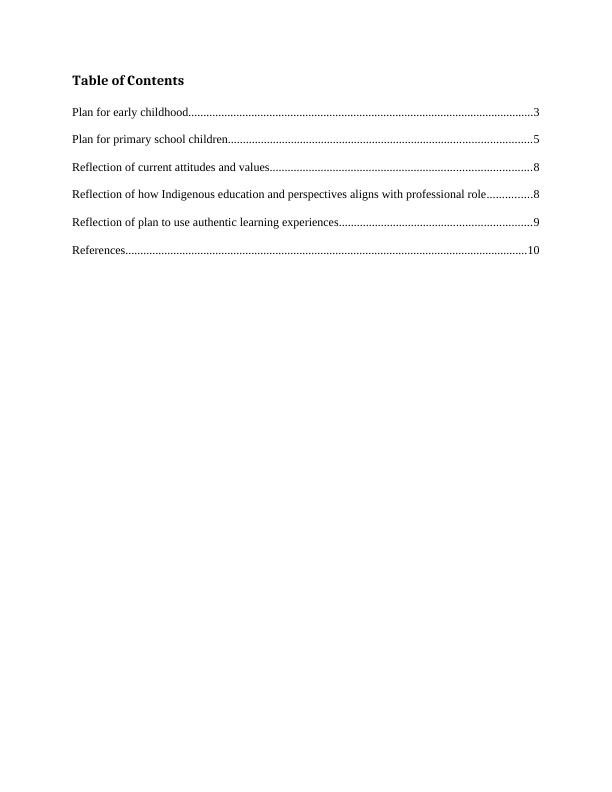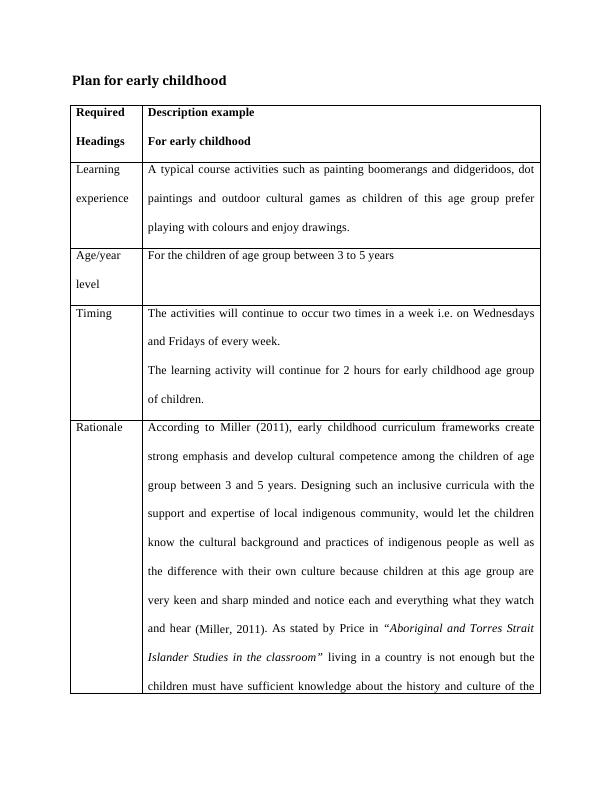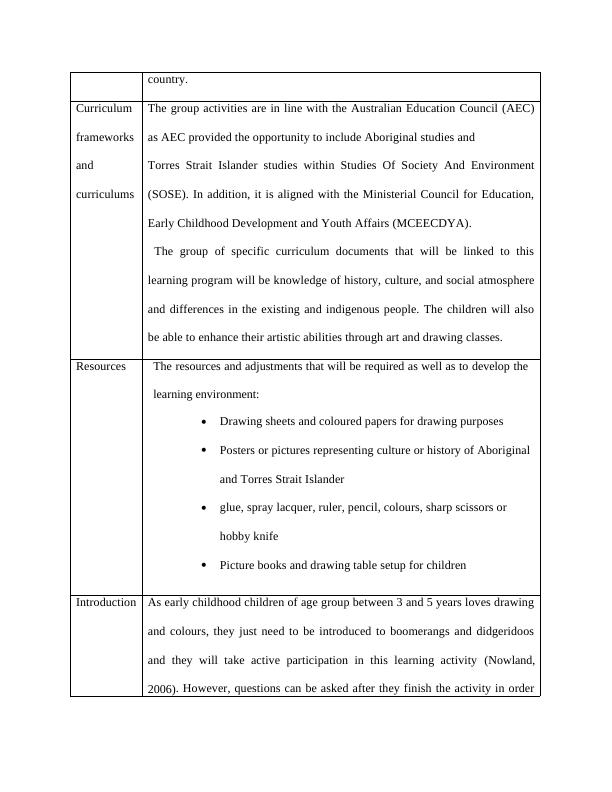Plan for Early Childhood and Primary School Children with Indigenous Education and Perspectives
Added on 2023-06-11
11 Pages2223 Words394 Views
End of preview
Want to access all the pages? Upload your documents or become a member.
Aboriginal and Torres Strait Islander Education in ECEC
|12
|3358
|104
The Value of Aboriginal and Torres Strait Islander Culture on Education and Learning
|12
|3126
|42
The Aboriginals Community Assignment 2022
|10
|2121
|14
Contemporary Indigenous Health and Wellbeing
|8
|1998
|199
Diploma of Early Childhood
|6
|771
|111
Closing the Gap Policy and its Impact on Aboriginal and Torres Strait Islander Health
|10
|2527
|101




